
Section E New Testament
Chapter 49 - The Siloam Road
The paved Herodian street at the northwest corner of the Temple Mount continues south along the Western Wall until it reaches the Pool of Siloam on the south end of the City of David.
Herodian pavement stones from the first century. This style of pavement stone is seen in many places where streets from the days of the New Testament have been excavated.
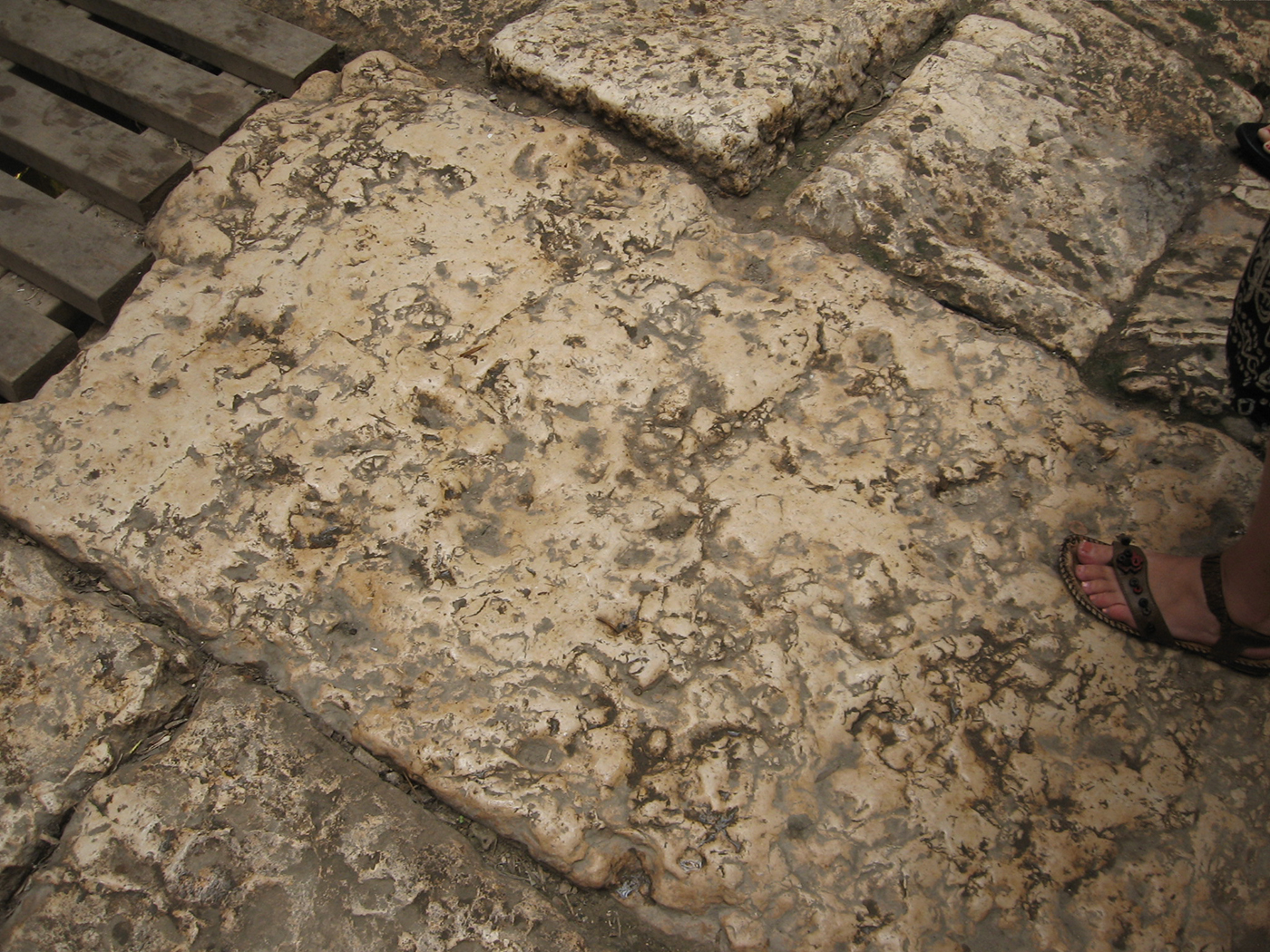
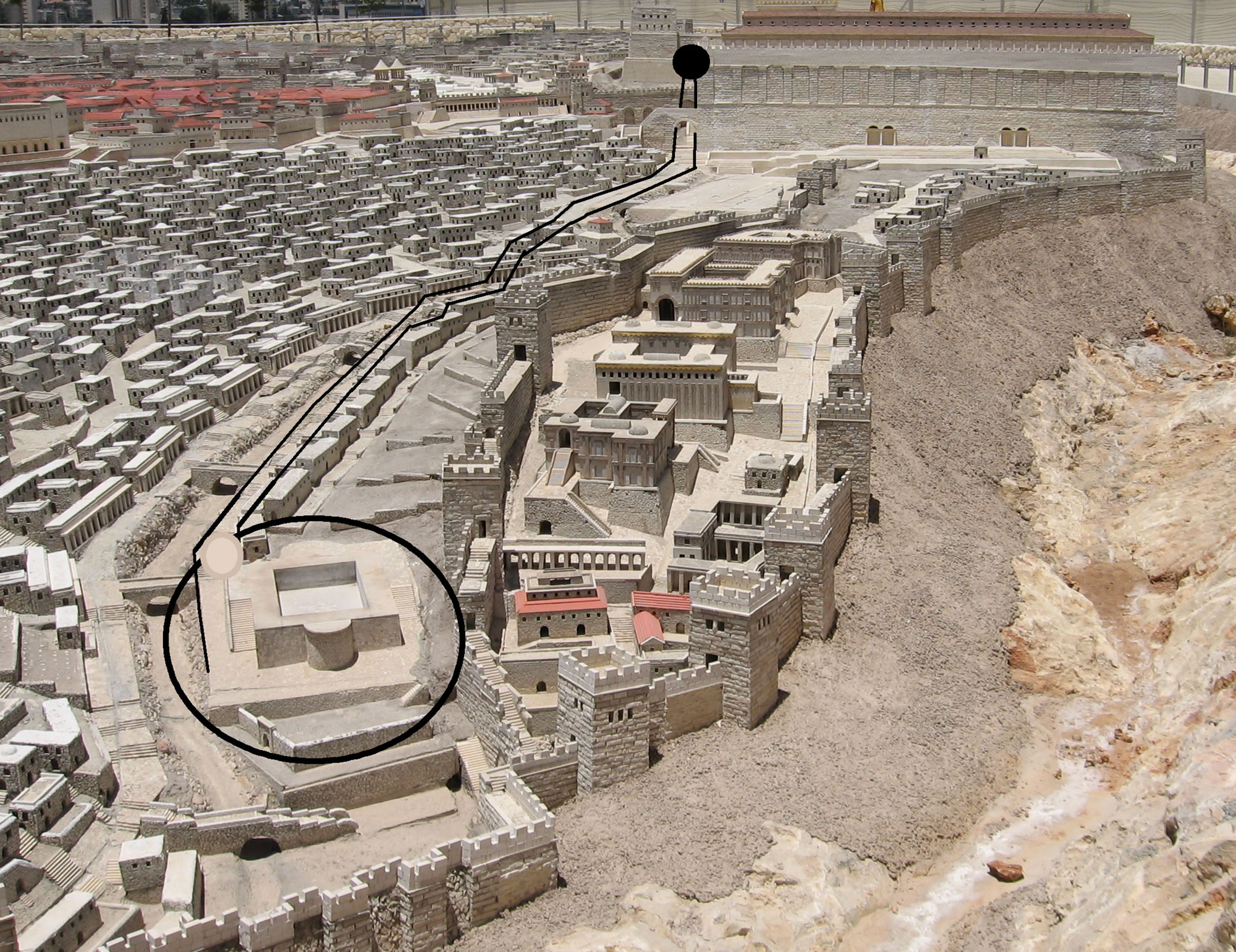
The Herodian street that ran from the north of the city along the Western Wall, under Robinson’s arch, and down the eastern hill through the City of David until it reached the Pool of Siloam. The Pool of Siloam is circled.
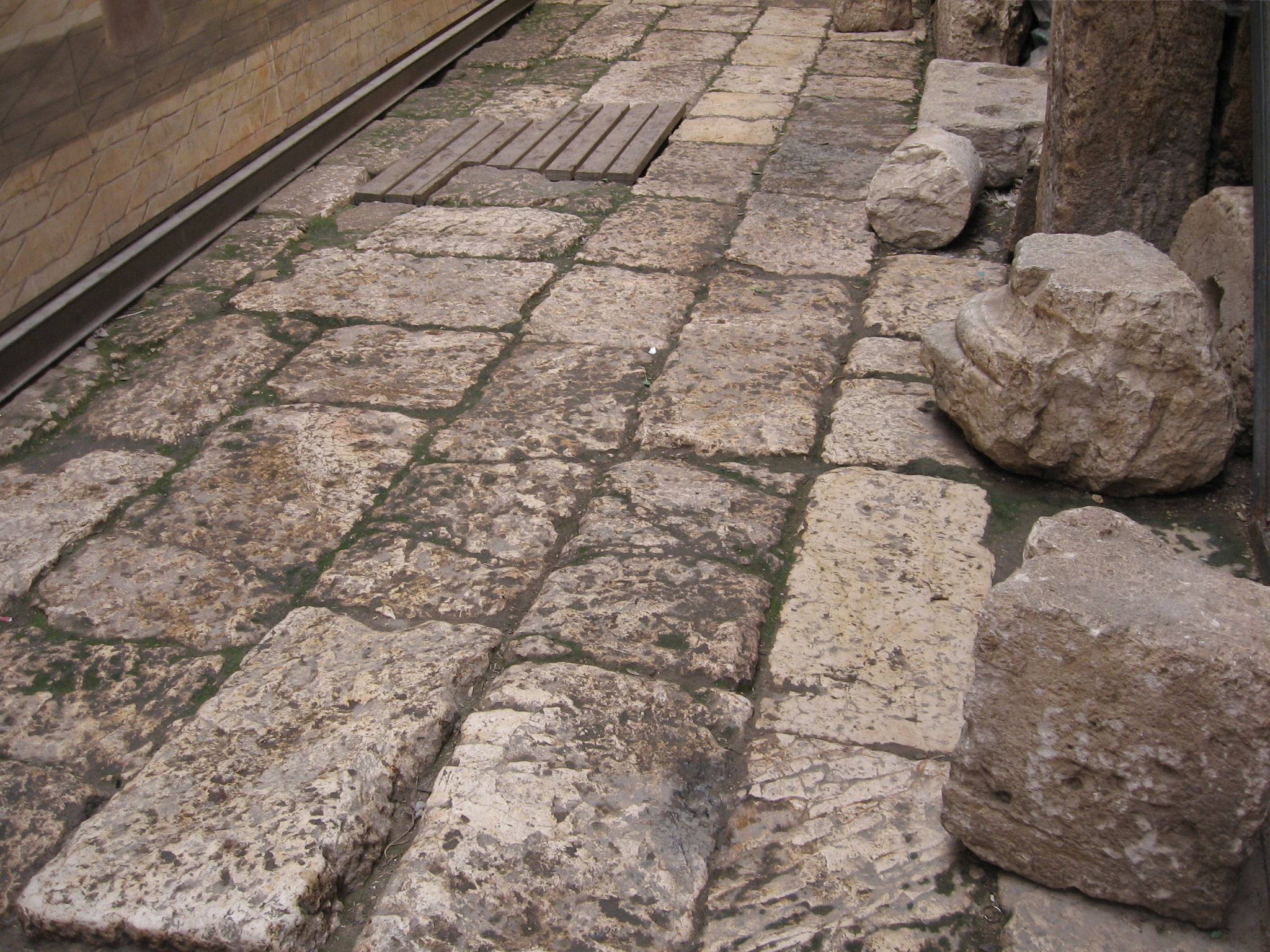
This pavement along the edge of the Pool of Siloam leads to the street.
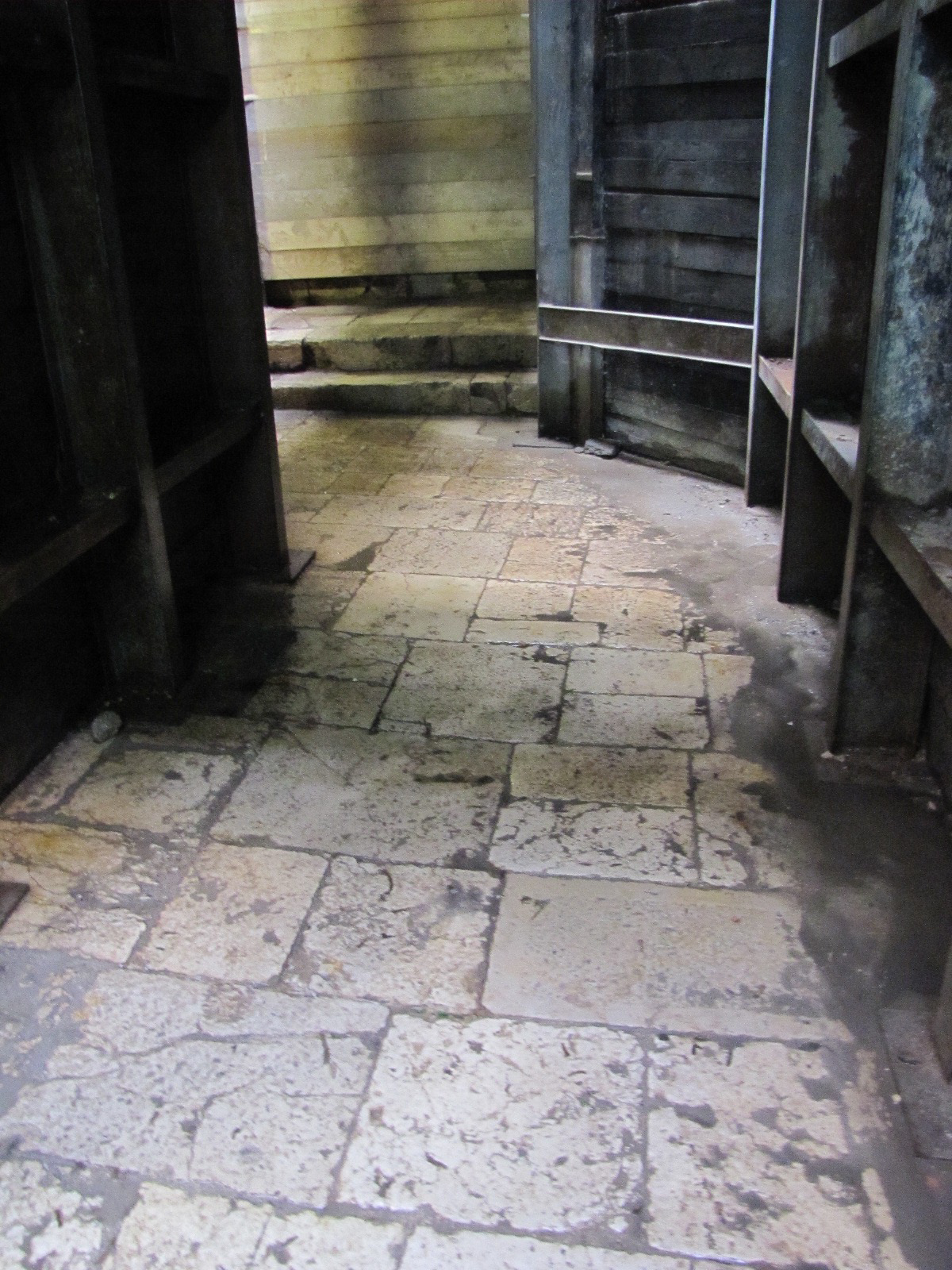
Recent excavation of this area has uncovered a stepped stone street that ascends from the Pool of Siloam to the Temple Mount. Notice in the back of this photo that the front of three steps can be seen. The style of the stairs is similar to the large staircases in front of the Double and Triple Gates, in that the steps alternate between narrow and wide runs. In this photo the first step is a narrow run while the second step is wider. This created a slow, steady procession as people ascended from the Pool of Siloam to the Temple Mount. In this photo the excavation turns toward the left and then follows a section of this wide street up through the City of David.
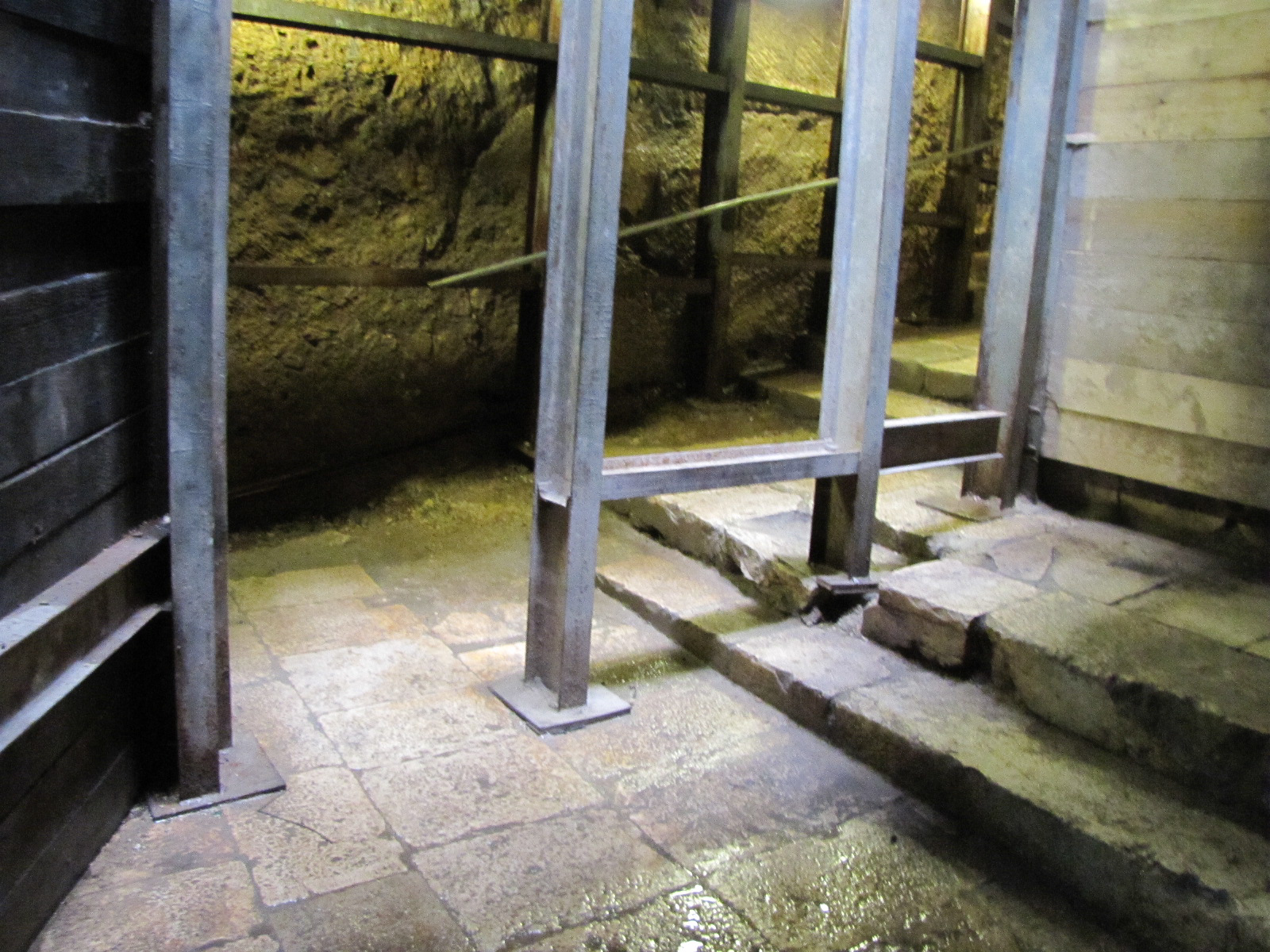
A portion of the width of the street can be seen here. Only the left side (top of photo) was excavated and accessible when this photo was taken. Again, notice the steps beginning to ascend through the City of David on the eastern ridge of the city as we approach the Ophel and Mount Moriah. This street and these stairs would have been used by the blind man as he approached the Pool of Siloam to wash the mud from his eyes:
Having said this, Jesus spit on the ground, made some mud with the saliva, and put in on the man’s eyes. ‘Go,’ Jesus told him, ‘wash in the Pool of Siloam.’ So the man went and washed, and came home seeing. - John 9:6-7
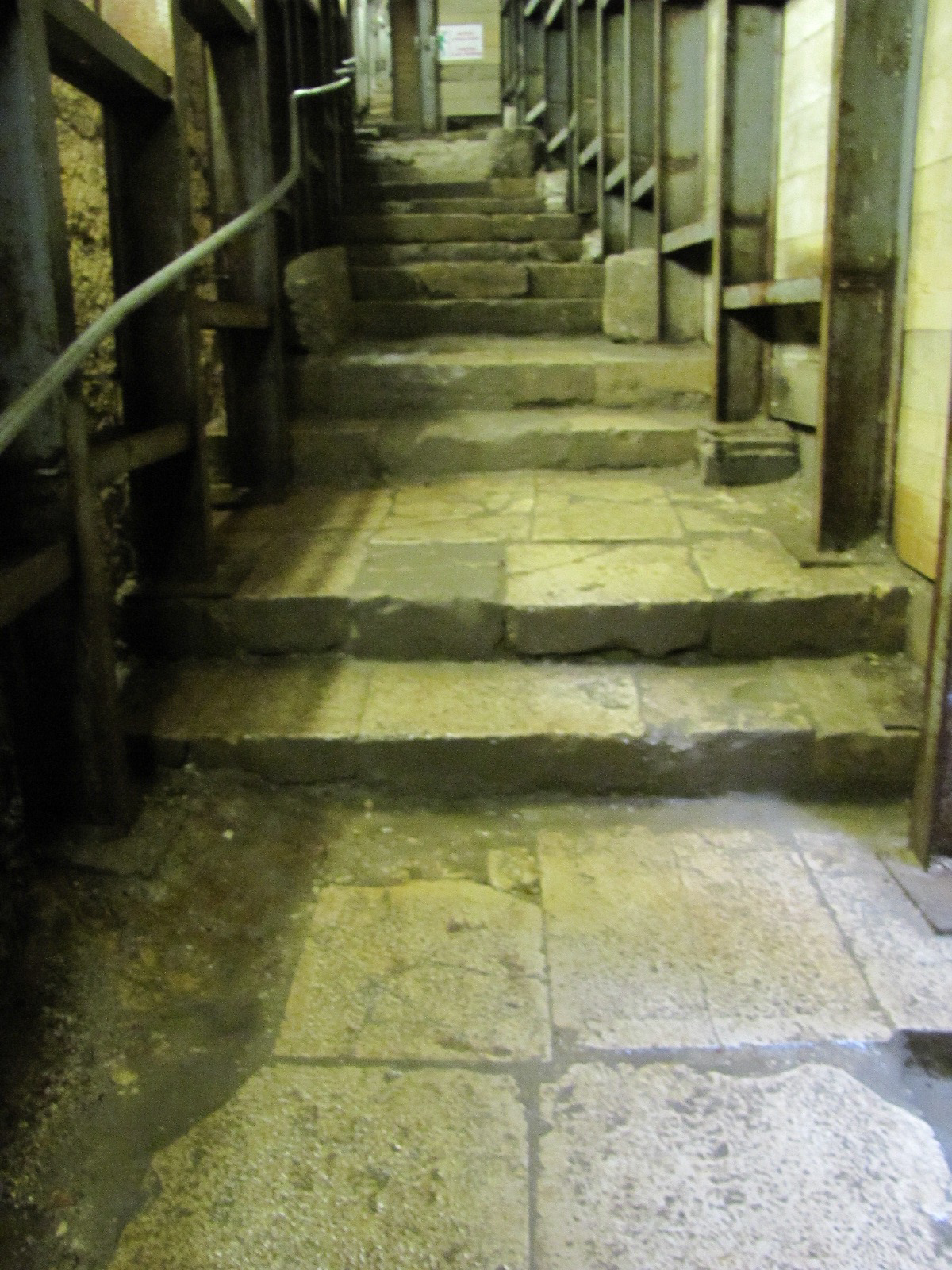
A good view of the alternating steps and the pavement stones. To the left is dirt that has not been excavated yet. To the right is a wall that blocks access to the rest of the street which is being excavated now.
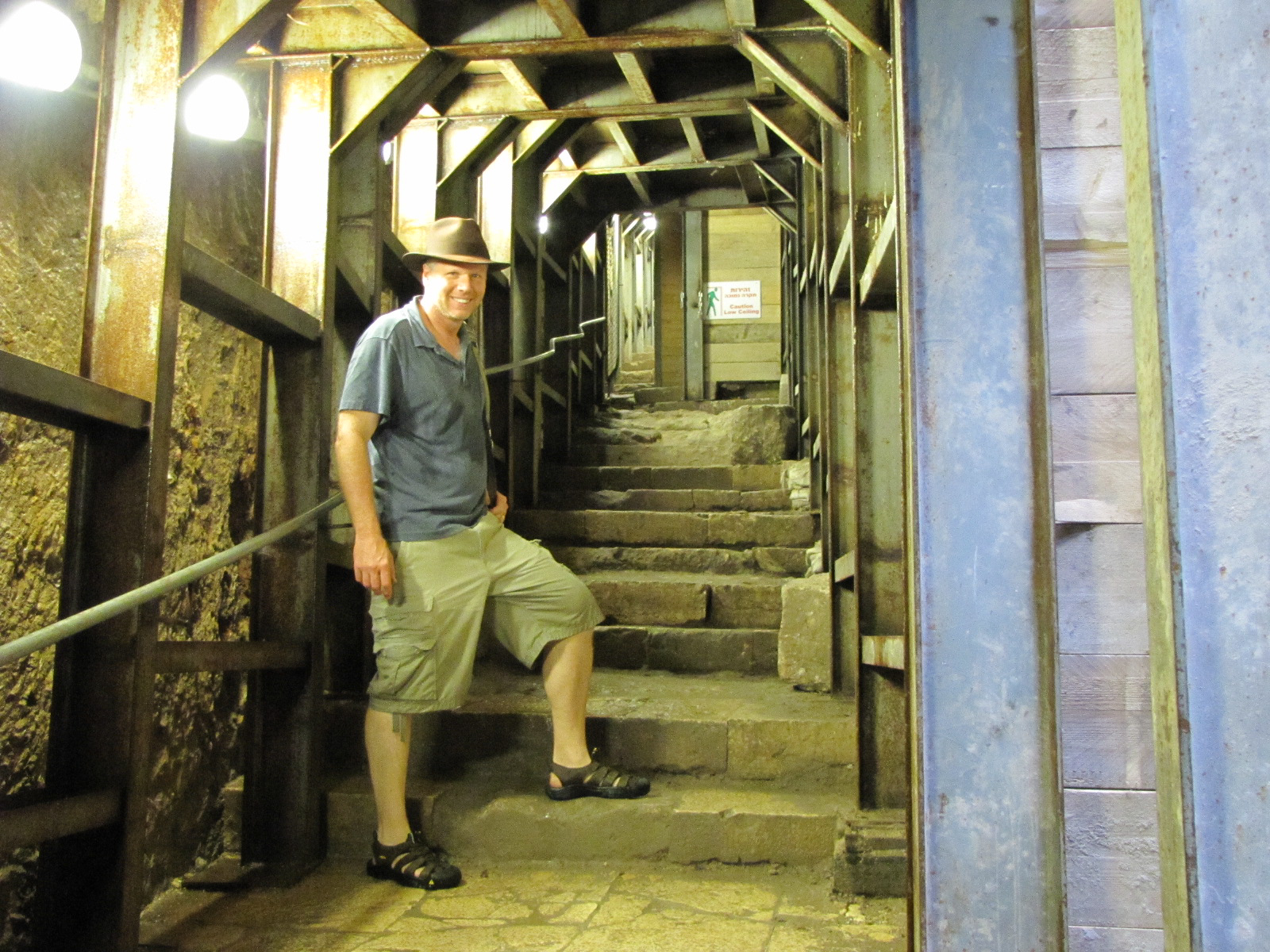
Galyn ready to ascend the recently excavated stepped stone street that leads from the Pool of Siloam up to the Temple Mount. The continuation of the street can be seen in the opening further up on the left side of the street. The Temple Mount is 1600 feet (a little more than a quarter mile) up these stairs to the north, but the excavation does not continue all the way to the Temple Mount.
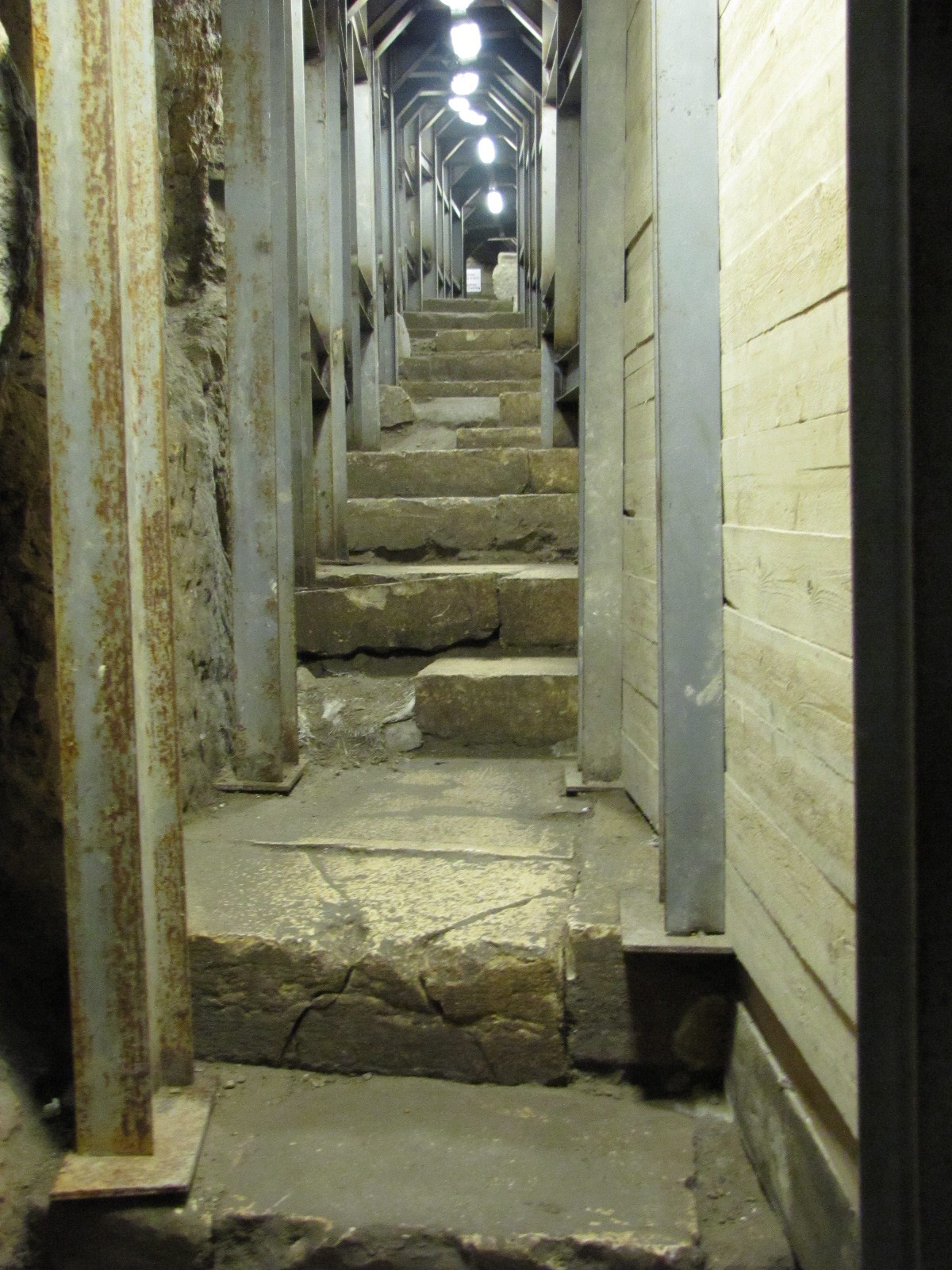
The stepped stone street is much wider than this, but this narrow portion was excavated and accessible in June of 2010.
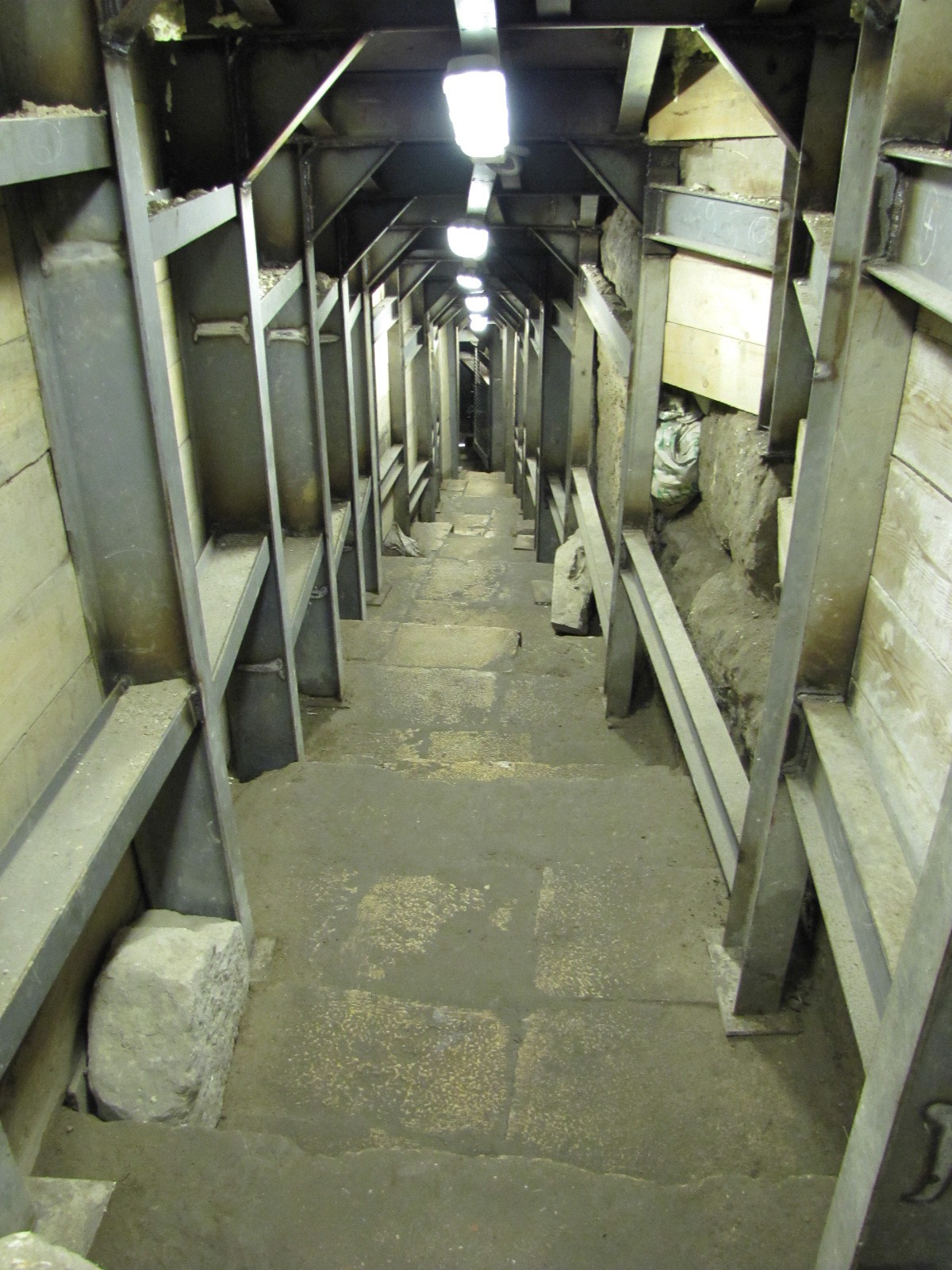
Looking down the stepped stone street that leads to the Pool of Siloam. Only 6 feet of the 25-foot-wide street has been excavated so far.
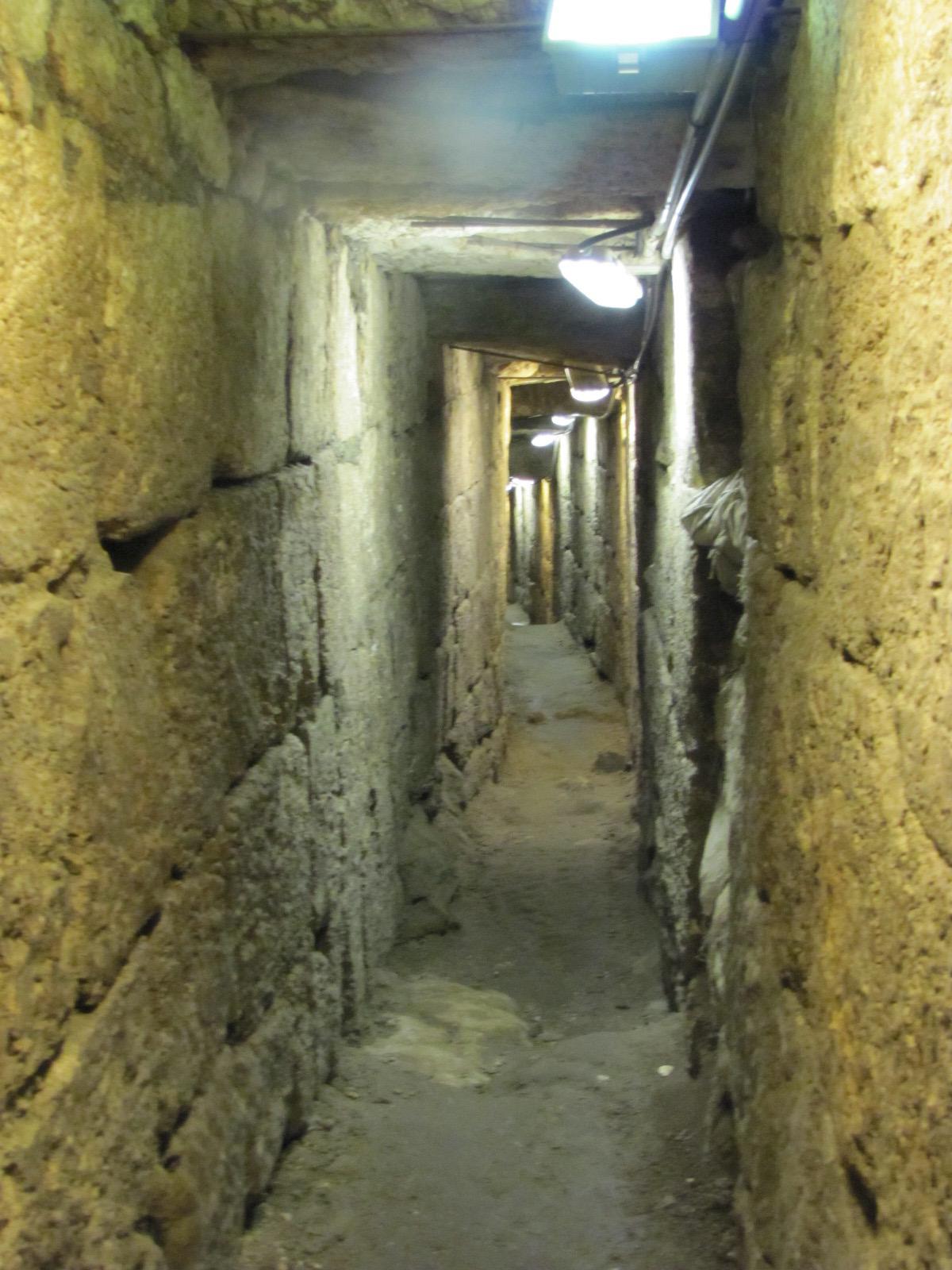
This is a photo of the gutter that runs under the stepped stone street. This gutter system would collect runoff rain water from the city and drain it toward the Pool of Siloam. Notice that it has been completely excavated, since both sides reveal a wall made of blocks that support the stone paved street above.
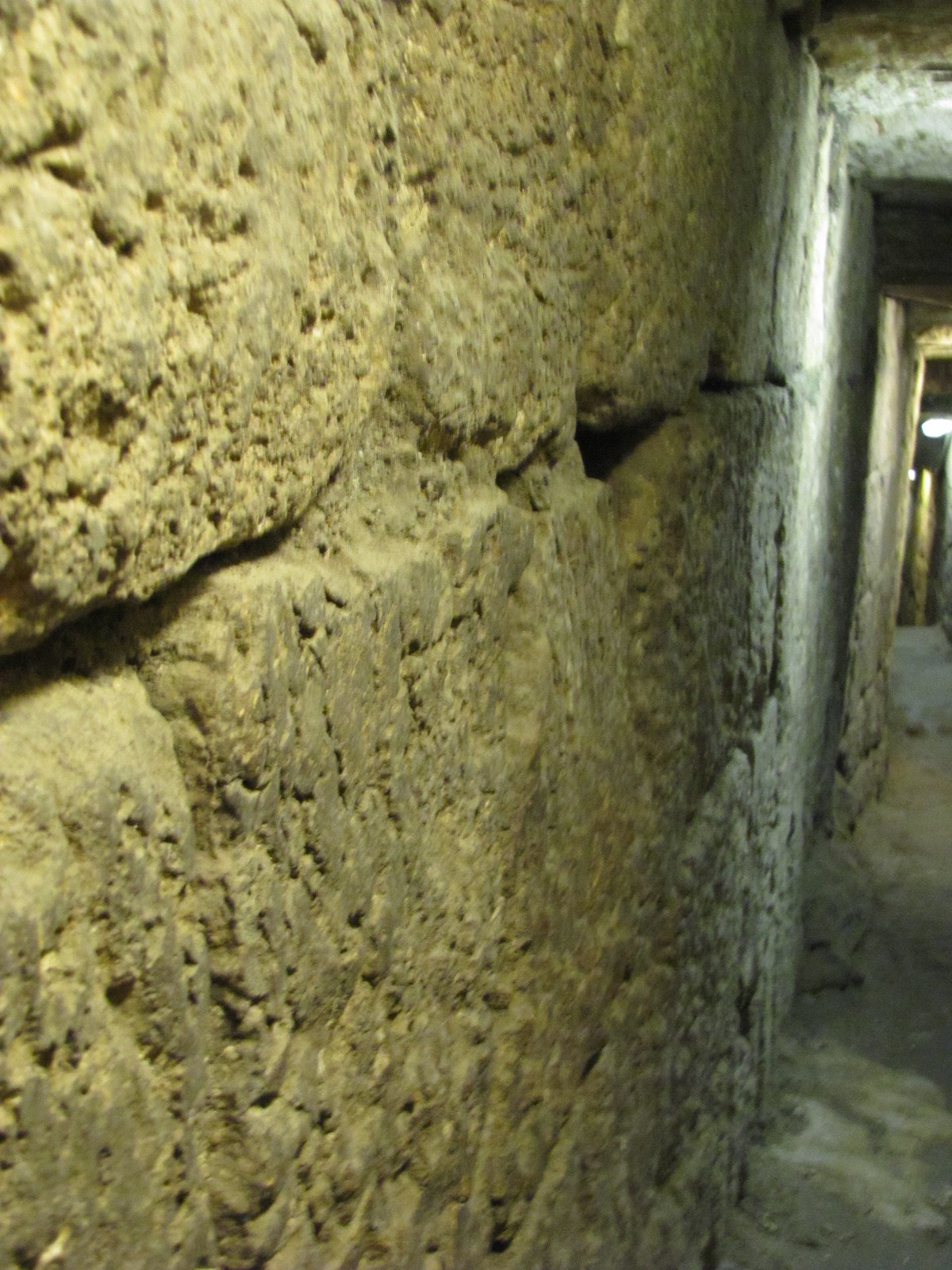
A close up of the left (west) stone wall of the gutter under the street.
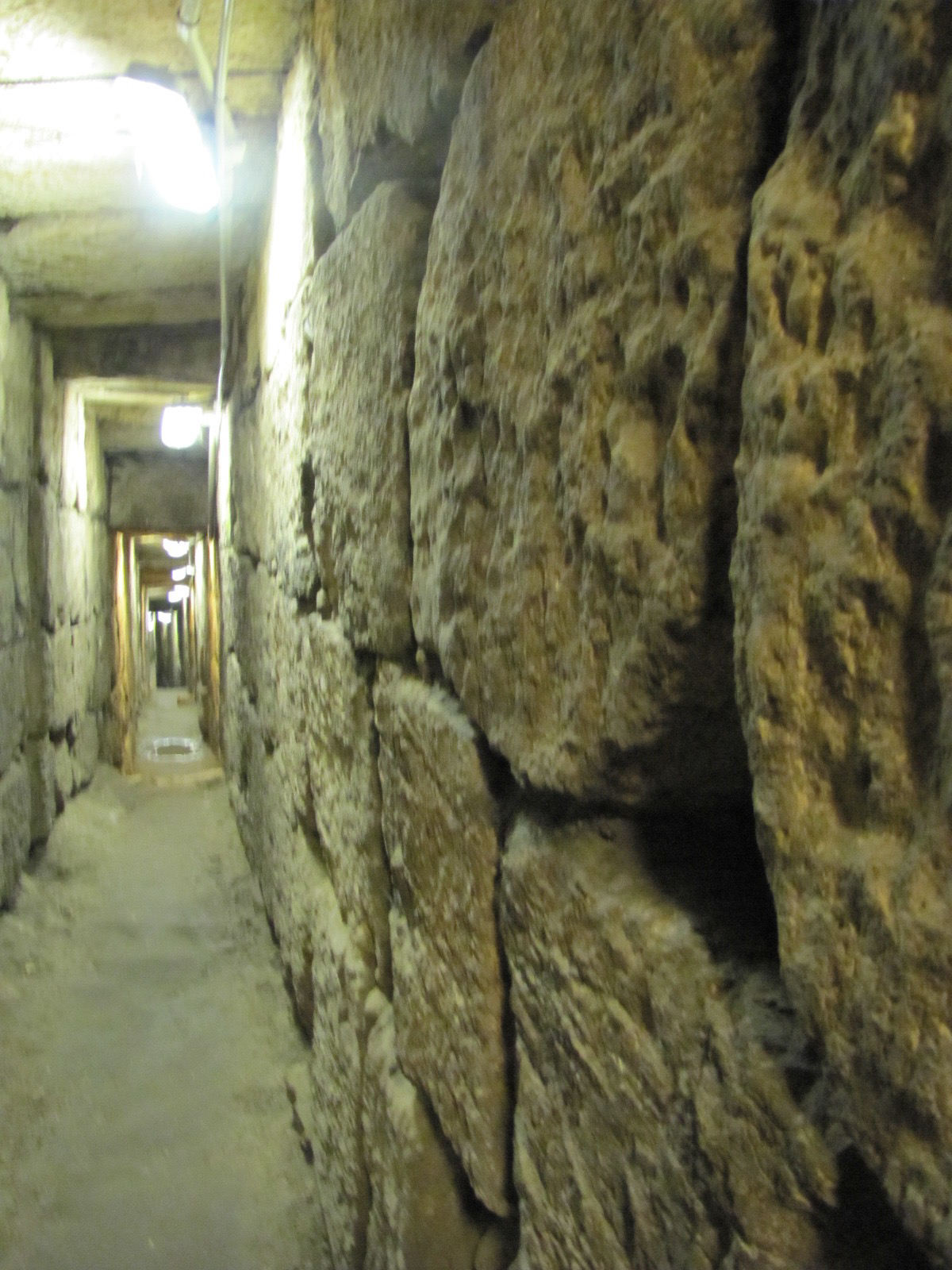
The east wall of the gutter and a view of the tunnel ahead.
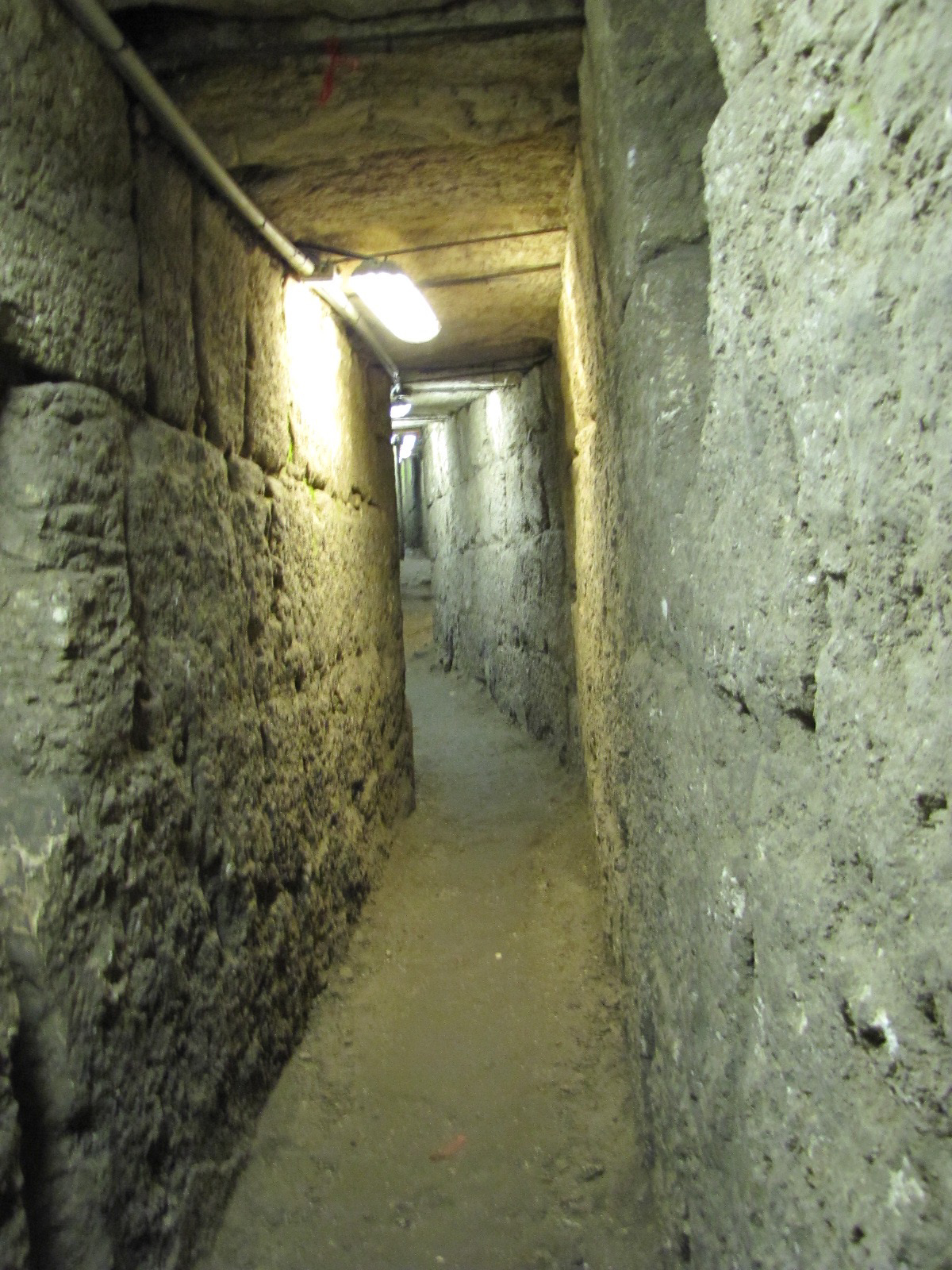
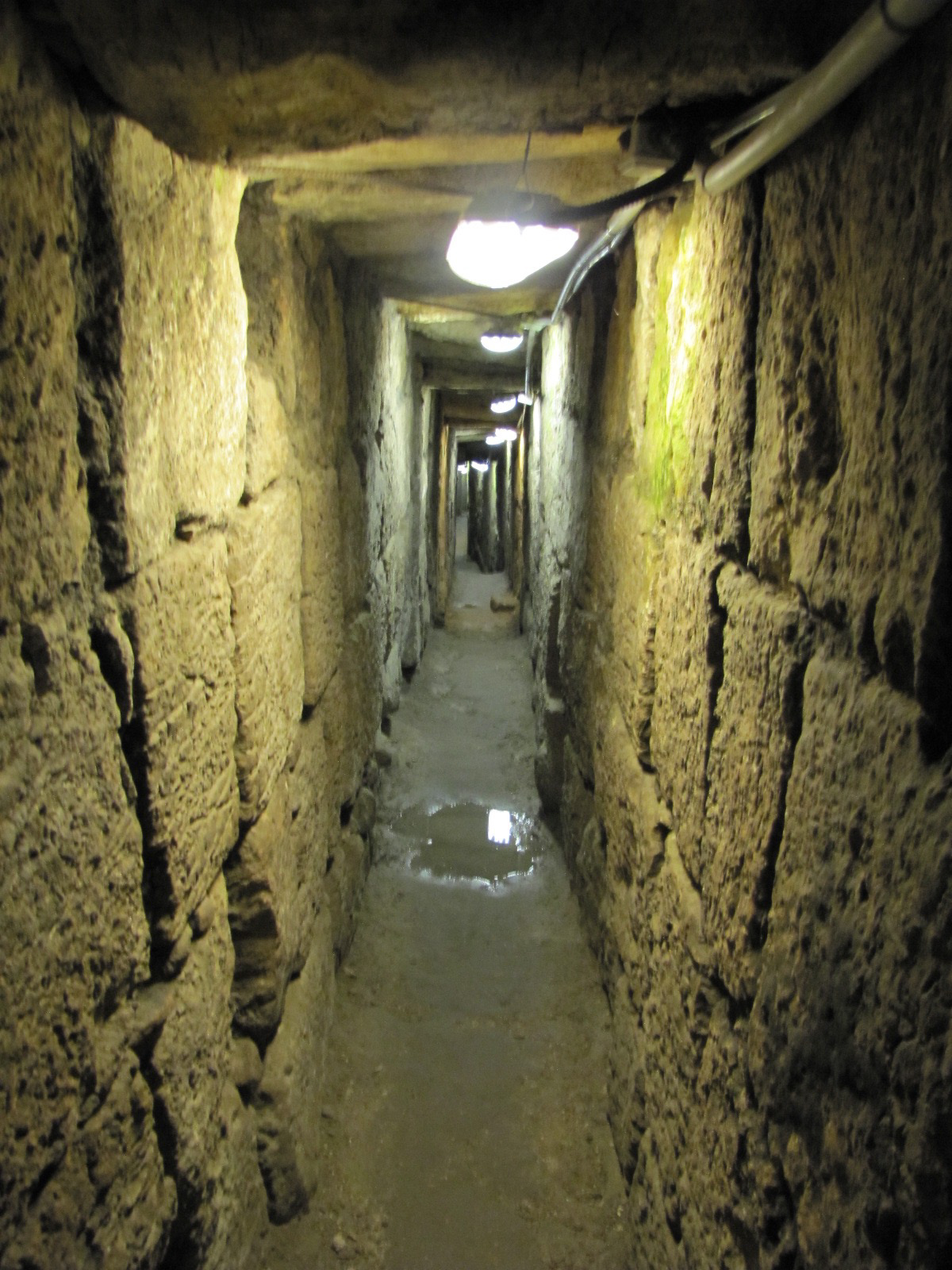
In 70 AD the Jews used this gutter system to escape from the city of Jerusalem by fleeing south under the walls. When the Romans finally entered the city they found these tunnels crowded with Jews who they then slaughtered.
Josephus records Simon, the Jewish leader, and other Jews hiding in tunnels like these:
This Simon, during the siege of Jerusalem, was in the upper city; but when the Roman army was gotten within the walls, and were laying the city waste, he then took the most faithful of his friends with him . . . and let himself and all them down into a certain subterraneous cavern that was not visible above ground. Now, so far as had been dug before, they went onward along it without disturbance; but where they met with solid earth, they dug a mine under ground, and this in hopes that they should be able to proceed so far as to rise from under ground in a safe place, and by that means escape. But when they came to make the experiment, they were disappointed of their hope; for the miners could make but small progress, and that with difficulty also; insomuch that their provisions, though they distributed them by measure, began to fail them. And now Simon, thinking he might be able to astonish and elude the Romans, put on a white frock, and buttoned upon him a purple cloak, and appeared out of the ground in the place where the temple had formerly been. At the first, indeed, those that saw him were greatly astonished, and stood still where they were; but afterward they came nearer to him, and asked him who he was. Now Simon would not tell them, but bid them call for their captain; and when they ran to call him, Terentius Rufus who was left to command the army there, came to Simon, and learned of him the whole truth, and kept him in bonds, and let Caesar know that he was taken. Thus did God bring this man to be punished for what bitter and savage tyranny he had exercised against his countrymen by those who were his worst enemies . . . This rise of his out of the ground did also occasion the discovery of a great number of others of the seditious at that time, who had hidden themselves under ground.
- Josephus, Wars of the Jews, book VII chapter II